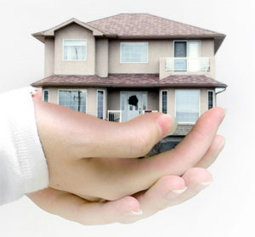Actions You Can Take
Shut Down Affected Utilities
 Water Source: Stop the source of the water. Turn off your outside water main, or call a plumber or other qualified tradesman to stop the source of water flow. Contact your local utilities department if you can’t find how to turn off the water main.
Water Source: Stop the source of the water. Turn off your outside water main, or call a plumber or other qualified tradesman to stop the source of water flow. Contact your local utilities department if you can’t find how to turn off the water main.- Electrical: Disconnect all power to affected areas. Do not operate your TVs or other electrical appliances while standing on wet carpets or floors (especially if concrete). Do not use your household vacuum cleaner to remove water.
Remove as Much Standing Water as Possible
- Floors: Remove as much standing water as possible by squeegee, mopping or blotting.
- Carpeting: Blot wet carpet with clean white towels. Remove Oriental rugs or other colored rugs from wet wall-to-wall carpet. Place a fan so air flows over the carpet, speeding the drying process.
- Ceilings: Punch small holes in sagging ceilings to relieve trapped water. Place a plastic (not metal) bucket under the leak. Do not turn on ceiling light fixtures or fan if the ceiling is wet.
Move Wet Items to Dry Areas
- Clothing/Fabrics: Move wet items to a dry place. Do not allow draperies to remain in contact with wet floors or carpeting. Open and empty drawers and cabinets for complete drying. Hang furs and leather goods to dry separately at room temperature.
- Furniture: Move lighter pieces off of the carpeting. Place plastic wrap or plastic bags beneath the legs of larger furniture. Wipe any residual water off of the furniture.
- Art Objects/Paintings: Remove valuable painting and pictures from wet walls. Transfer all objects to a dry safe place.
- Upholstery: Remove and prop up wet upholstered cushions for even drying. Check for possible bleeding of colors.
- Luggage: Open suitcases and luggage to dry in sunlight if possible.
- Books/Magazines: Do not leave books, magazines or other colored items on wet carpets or floors. High value books should be given to a professional for proper drying and restoration as soon as possible.
Ventilate Affected Areas
- Air Conditioning: Turn on your air conditioner (no lower than 72 degrees) to speed drying in the summer, or more humid regions.
- Open windows and doors when possible.





